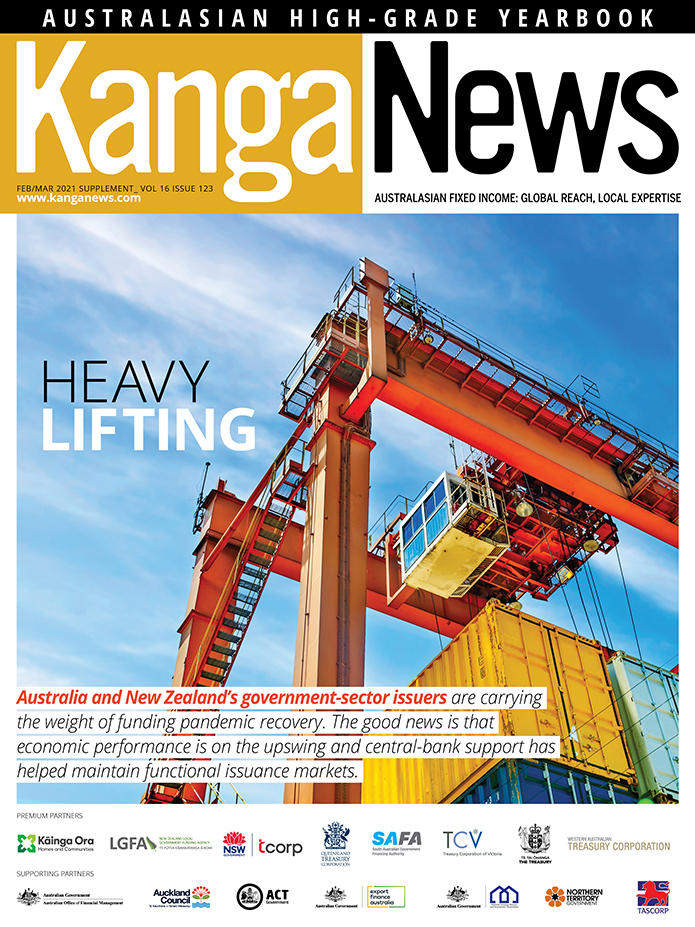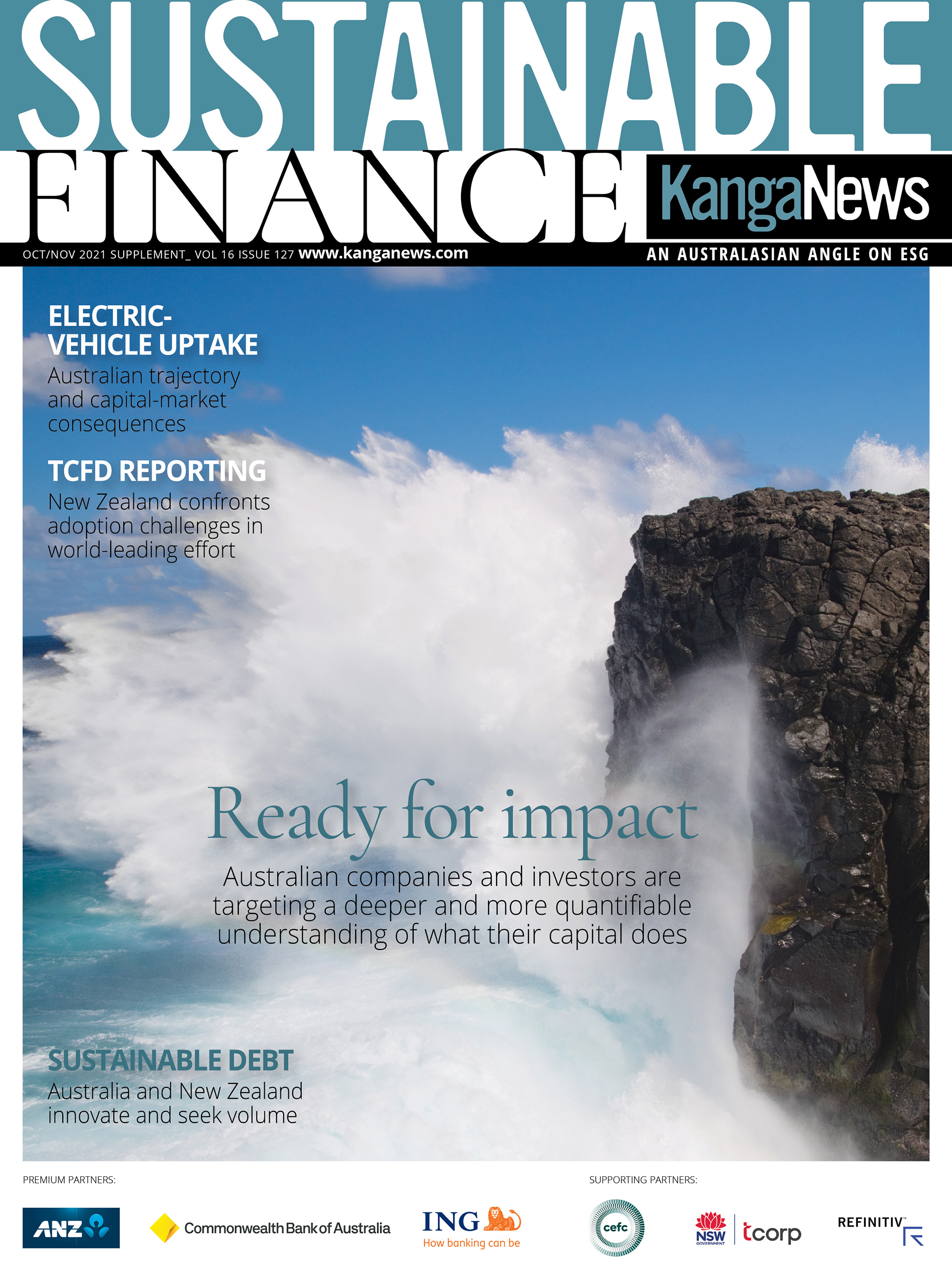
Investors snap up semi-government GSS bonds
Investor appetite for green, social and sustainability bonds continues to outstrip supply, with two recent semi-government deals attracting renewed engagement from a diverse range of domestic and global investors. The bonds – from Queensland Treasury Corporation and Treasury Corporation of Victoria – significantly stepped up flow from these issuers.
Petra Witowski Deputy Editor KANGANEWS
Queensland Treasury Corporation (QTC)’s fourth green bond was its largest, coming in at A$3 billion (US$2.2 billion) when it printed on 9 September, or double its last such deal – a A$1.5 billion note issued in November 2020. For QTC, the upsized transaction follows incremental increases to all its green bonds issued over the last few years. The semi-government issuer printed a A$1.25 billion transaction in February 2019 and a A$750 million note in March 2017.
Treasury Corporation of Victoria (TCV)’s sustainability bond – its first in this format, having previously brought a single green bond to market in 2016 – landed at A$2.5 billion when it printed on 16 September, a massive uplift on the A$300 million outcome from its green bond.
Investor interest in both transactions far outstripped supply, according to deal sources. Jose Fajardo, executive director, funding and liquidity at QTC in Brisbane, tells KangaNews the issuer was given an opportunity to engage with a wide range of domestic and international investors following the Reserve Bank of Australia (RBA)’s September meeting and the end of the European summer.
More than 60 investors participated with a final orderbook in excess of A$4.3 billion at close and strong participation from offshore investors, with an allocation of more than 40 per cent, Fajardo reveals. The transaction also attracted a number of first-time investors to QTC.
QTC’s deal priced at 45 basis points over the 10-year bond futures contract, pushing the semi-government borrower to the top of the leaderboard for environmental, social and governance (ESG) themed issuers in Australian dollars (see table). ANZ, Commonwealth Bank of Australia, Deutsche Bank and UBS were leads.
TCV’s 2035 sustainability bond priced at 80 basis points over EFP and brought the treasury corporation into a comparable range as a significant semi-government green, social and sustainability (GSS) bond issuer alongside New South Wales Treasury Corporation and QTC. ANZ, Deutsche Bank, National Australia Bank and UBS were joint leads.
Paul Kelly, TCV’s Melbourne-based head of markets, says the intent was to make a meaningful foray into the GSS market and, most significantly, to incorporate labelled issuance into the issuer’s mainstream curve.
“It is important to understand that the 2035 sustainability bond will be the benchmark bond at this maturity for TCV – it will not sit at the side of the curve,” he tells KangaNews. “Over time, we will build the line to a volume comparable with our other benchmark lines and it will receive the same support from TCV’s fixed-income dealer panel.”
LARGEST AUSTRALIAN DOLLAR ESG-THEMED BOND ISSUERS
| Issuer | Volume issued (A$M) | Number of deals | Number of lines outstanding | First issue date | Most recent issue date | Format(s) issued |
|---|---|---|---|---|---|---|
| Queensland Treasury Corporation | 6,500 | 4 | 4 | 15 Mar 17 | 9 Sep 21 | Green |
| European Investment Bank | 5,425 | 17 | 6 | 25 Jul 17 | 25 Mar 21 | Green, sustainability |
| New South Wales Treasury Corporation | 4,900 | 3 | 2 | 9 Nov 18 | 20 Oct 20 | Green, sustainability |
| Treasury Corporation of Victoria | 2,800 | 2 | 1 | 19 Jul 16 | 16 Sep 21 | Green, sustainability |
| KfW Bankengruppe | 2,650 | 7 | 1 | 26 Mar 15 | 28 Jul 21 | Green |
| National Housing Finance and Investment Corporation | 1,997 | 5 | 3 | 21 Mar 19 | 9 Jun 21 | Social, sustainability |
| ANZ | 1,850 | 2 | 1 | 27 May 15 | 19 Aug 20 | Sustainability |
| International Finance Corporation | 1,700 | 18 | 2 | 6 Mar 18 | 21 May 21 | Social |
| Asian Development Bank | 1,330 | 4 | 2 | 8 Jan 19 | 22 Jan 20 | Green |
| Wesfarmers | 1,000 | 1 | 1 | 16 Jun 21 | 16 Jun 21 | Sustainability-linked |
| Oversea-Chinese Banking Corporation Sydney Branch | 1,000 | 2 | 2 | 26 Nov 19 | 12 Aug 21 | Green |
Source: KangaNews 17 September 2021
TCV’s sustainability-bond framework – developed with the assistance of its sustainability bond coordinator, ANZ – gives it significant opportunity to build volume. The programme covers a pool of assets worth A$9.2 billion. Social assets account for A$6.9 billion, with Victoria’s Big Housing Build social-housing project a key contributor alongside education, safety and social programmes. The pool also incorporates A$2.3 billion of green assets.
Kelly says the programme gives TCV flexibility to issue in any GSS format, although the initial focus will be on building liquidity in the 2035 sustainability-bond line.
“This programme allows us to support the government’s sustainability objectives, of which there are many,” Kelly adds. “It supports environmental projects such as those included in the government’s five-year plan for net-zero emissions and progressive social projects such as affordable housing. Including both green and social assets was important for building the pool volume and meeting investor mandates.”
DEAL DRIVERS
Craig Johnston, Sydney-based vice president, Australian and New Zealand dollar syndicate at Deutsche Bank, explains that many factors contributed to QTC’s successful transaction, including strong participation from a wide range of investors.
“ESG is undersupplied in Australia and it feels like every investor is still allocating to this part of the market,” Johnston explains. “QTC did a very well distributed deal but also got a pricing and volume benefit. Issuing in green format certainly helped.”
While the proportion of Australian investors in QTC’s deal was consistent with previous transactions, at 59 per cent, there was a slight geographical shift from QTC’s most recent deal, with a 10 per cent increase in Asian investors to make up for the slight drop in EMEA participants (see chart 1).
Nick Kalisperis, executive director, DCM syndicate at UBS in Sydney, tells KangaNews although there was a higher proportion of Asian investors compared with QTC’s last transaction, the split between domestic and offshore investment was similar, with a higher proportion of asset managers and insurance companies (see chart 2).
Kalisperis notes that ESG is becoming more significant for Australian investors. “This is one of the reasons this transaction was successful,” he says. “It wasn’t just the additional investors that target sustainable-only investments – though there certainly are some of those here – but it also provided a product that is generally in quite short supply in the Australian dollar market and this is becoming increasingly topical across the investor community.”
Johnston says Queensland’s relative lack of COVID-19 cases compared with New South Wales and Victoria may have encouraged some offshore investors to participate, but this was not the sole driver.
Meanwhile, Kelly says the 2035 maturity suited the assets in TCV’s pool but also met multiple pockets of investor demand. “We have had investor feedback that getting regular access to ESG assets and long-dated assets is difficult, so providing a benchmark line with a 2035 maturity gave us a chance to cater to both.”

Source: Queensland Treasury Corporation, Treasury Corporation of Victoria September 2021

Source: Queensland Treasury Corporation, Treasury Corporation of Victoria September 2021
Kelly also reveals more than 60 accounts participated in total – some of them new to TCV’s curve – indicating a demand benefit derived from the sustainability-bond format. However, he notes some European accounts with 10-year mandates were precluded from investing in the deal. Fund managers were the primary investors by type while domestic investors were allocated more than three-quarters of the deal.

WOMEN IN CAPITAL MARKETS Yearbook 2021
KangaNews's annual yearbook amplifying female voices in the Australian capital market.

HIGH-GRADE ISSUERS YEARBOOK 2021
The ultimate guide to Australian and New Zealand government-sector borrowers.

KANGANEWS SUSTAINABLE FINANCE H2 2021
KangaNews is proud to share cutting-edge information from the global and Australasian sustainable debt market.











